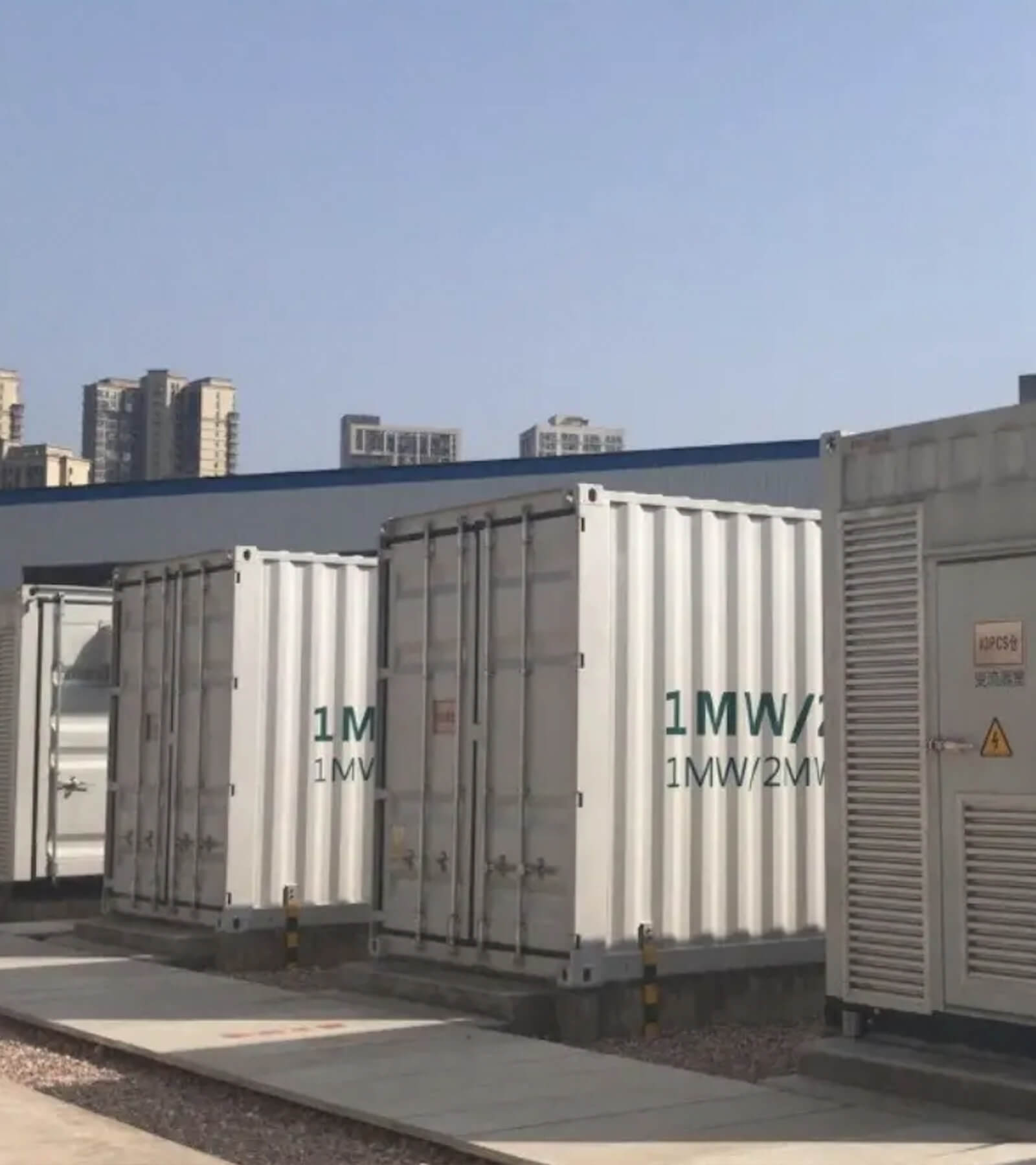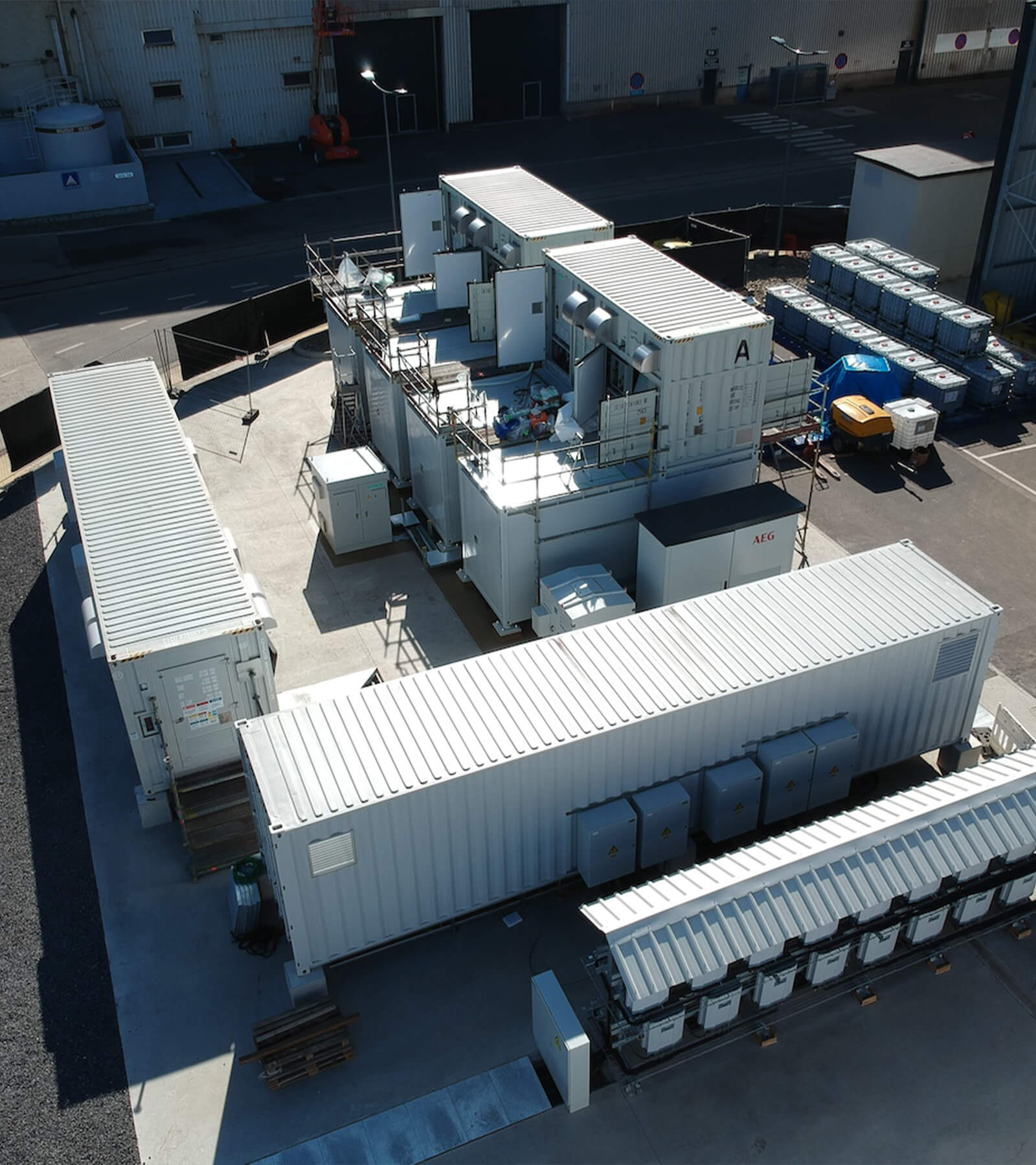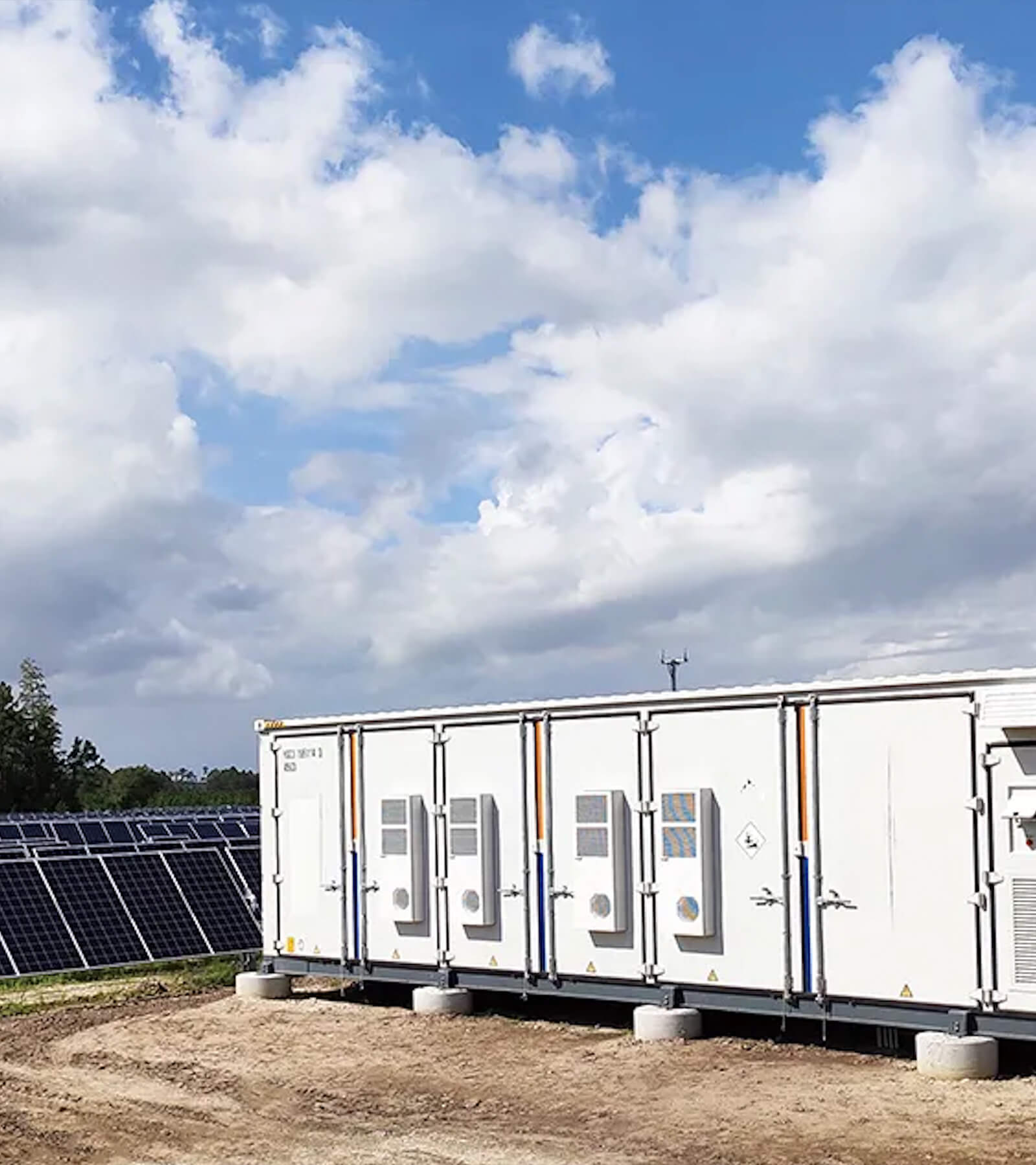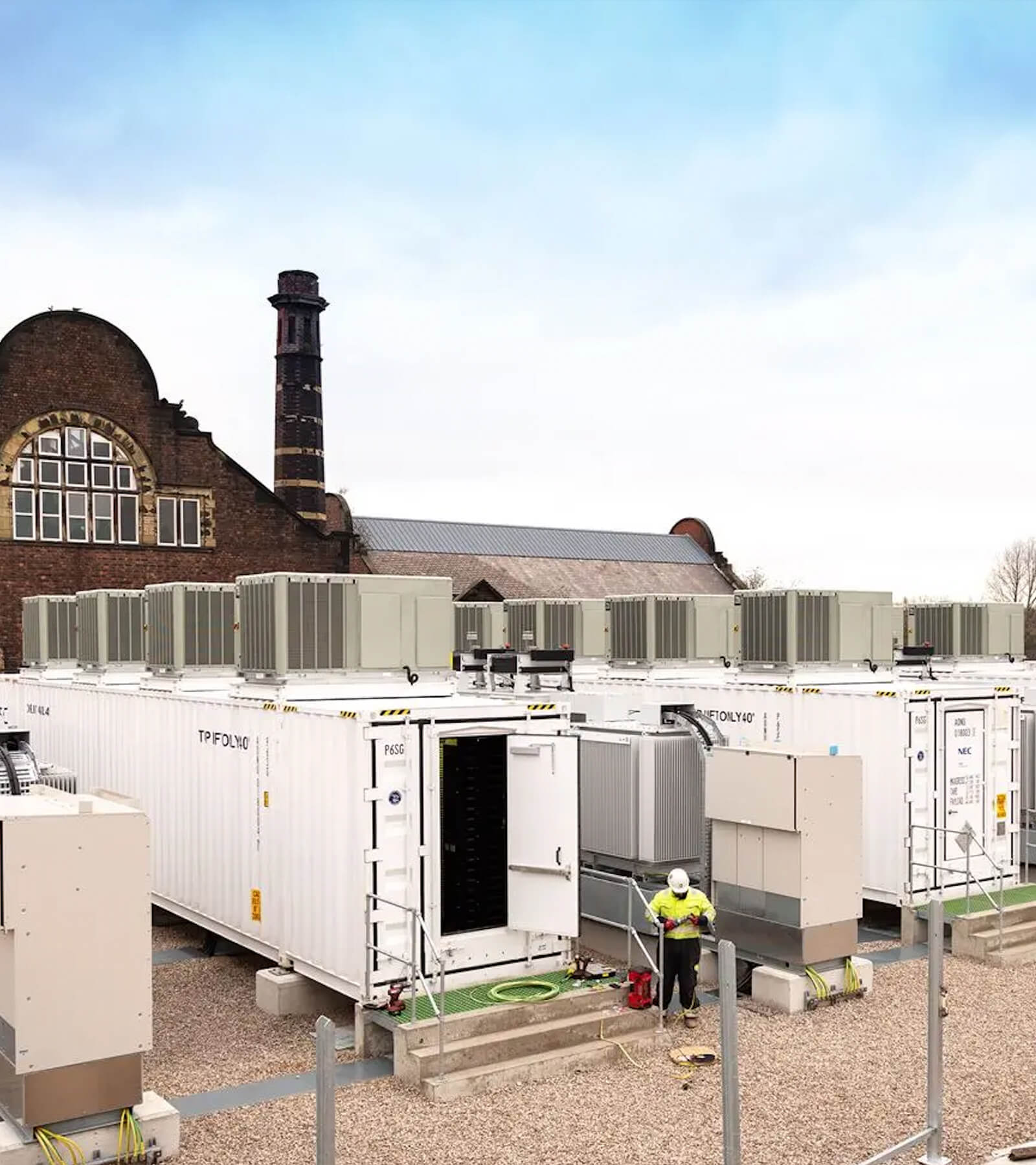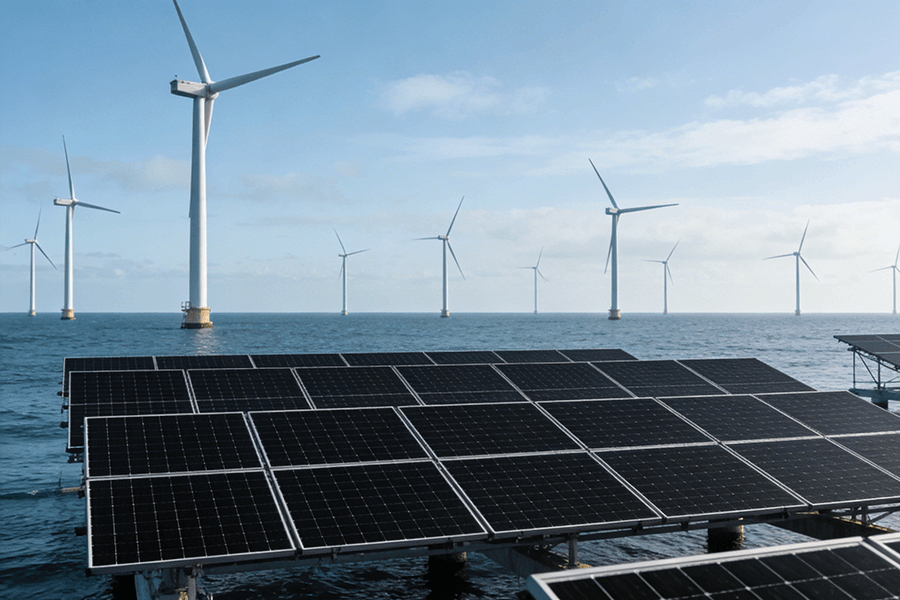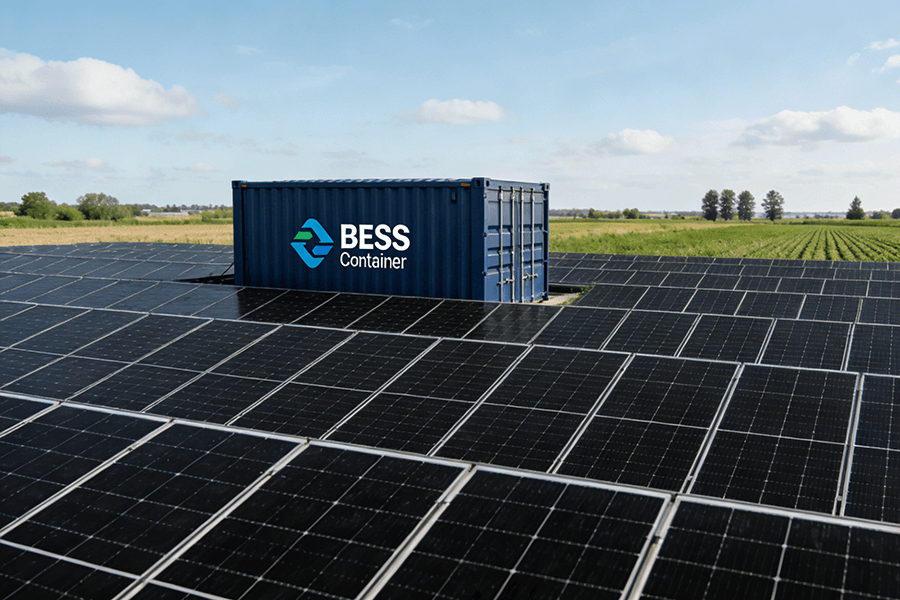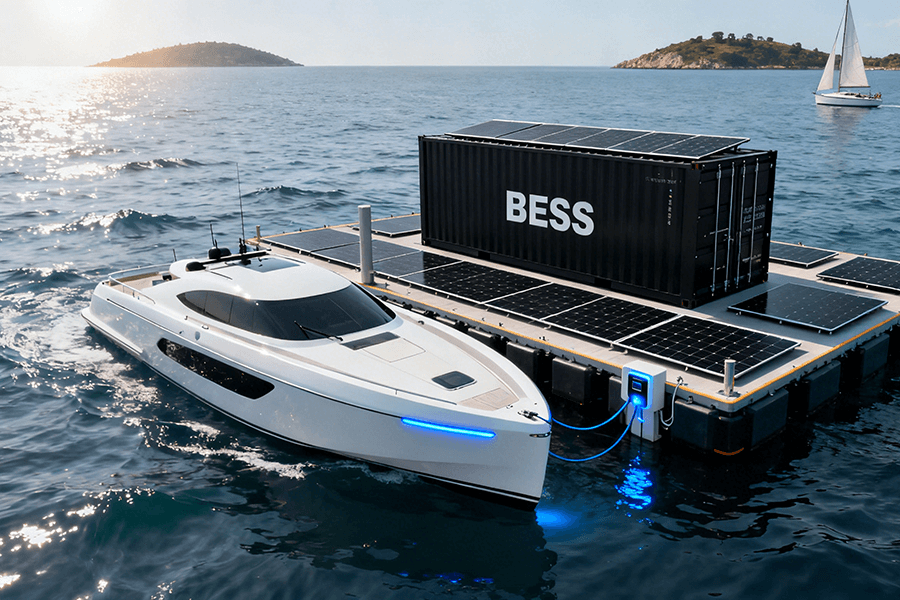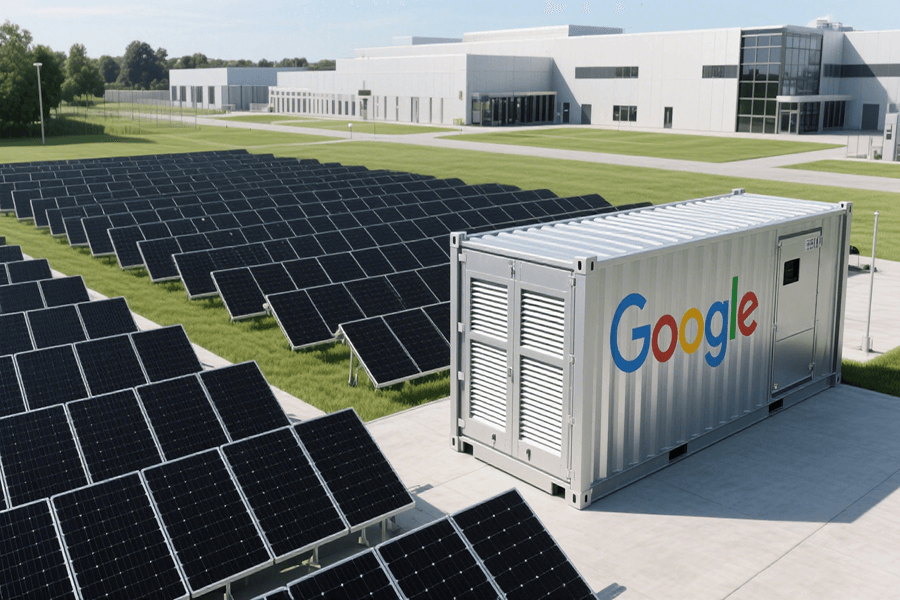
Opening: A Backup Power Revolution in Saint-Ghislain
Picture this: In the heart of Belgium, Google’s Saint-Ghislain data center has undergone a remarkable transformation. Once defined by the constant roar of diesel generators, the facility now operates in near-silence, powered by a state-of-the-art 5.5 MWh Battery Energy Storage System (BESS) Container. This isn’t just a technological upgrade—it’s a strategic move that has redefined the facility’s approach to energy management.
- Cost Savings: By replacing traditional diesel backup systems with advanced battery storage, Google has achieved a monumental feat: a staggering 92% reduction in backup power costs. This isn’t just good news for the company’s bottom line; it’s a game-changer for the entire data center industry, demonstrating the significant financial and environmental benefits of sustainable energy solutions.
- Sustainability Pioneering: But the innovation at Saint-Ghislain doesn’t stop there. This data center has long been a pioneer in sustainable practices, utilizing grey water from a nearby industrial canal for evaporative cooling. This unique approach has substantially decreased the energy required for temperature control, setting a new standard for resource efficiency in data centers.
The introduction of the BESS Container marks the latest chapter in Saint-Ghislain’s sustainability journey. It’s a testament to Google’s commitment to pushing the boundaries of what’s possible, rewriting the rulebook for data center operations, and paving the way for a more sustainable future in the tech industry.
Deep Dive 1: Grid Services—Because Your Battery Can Have a Side Gig
Here’s the plot twist: Google’s Battery Energy Storage System (BESS) isn’t just a backup power solution—it’s a revenue-generating powerhouse. Leveraging Centrica’s Flex Pond platform, this innovative system generates €2.1 million in annual revenue by providing essential frequency regulation services to the electrical grid. It’s as if the battery has taken on a lucrative part-time job, stabilizing power flow during demand spikes while simultaneously boosting Google’s bottom line.
The Role of Frequency Regulation: Grid’s Lifesaving Mechanism
Frequency regulation functions as the grid’s equivalent of CPR. In the complex ecosystem of electricity supply and demand, imbalances can occur rapidly, potentially causing instability. When power supply and demand get out of sync, Google’s BESS springs into action:
- Lightning-Fast Response: The system can inject or absorb energy within milliseconds.
- Frequency Stabilization: In Europe, where the standard electrical frequency is 50 Hz, the BESS works tirelessly to maintain this critical metric.
This crucial service doesn’t just keep the grid running smoothly—it pays off handsomely for Google. The €2.1 million in annual revenue from frequency regulation could be allocated to various initiatives, such as funding further advancements in green technology. Or, more practically, it could finance a significant upgrade to the office coffee machine fleet.
*Source: Centrica’s Flex Pond platform details – *https://www.centrica.com/business-solutions/energy-management/flex-pond
Deep Dive 2: Safety First—Google’s BESS Doesn’t Play Around
Batteries and safety? Google wrote the playbook here. When it comes to ensuring the reliability and safety of its 5.5 MWh Battery Energy Storage System (BESS) container, Google has set a new benchmark. The system proudly holds the UL 9540A certification—a gold standard issued by the CSA Group that is notoriously difficult to obtain, often compared to achieving a perfect score on a rigorous college exam.
This certification subjects energy storage systems to an arduous series of tests, evaluating critical aspects such as:
- Thermal Runaway Risks: Assessing the potential for uncontrolled heat generation within battery cells
- Ventilation: Ensuring proper airflow to dissipate heat and prevent the buildup of hazardous gases
- Fire Protection: Testing the effectiveness of fire suppression mechanisms
- Emergency Response Plans: Evaluating the system’s ability to handle and mitigate safety incidents
To secure this prestigious certification with flying colors, Google has implemented an advanced safety infrastructure. Each container is equipped with over 2,200 thermal sensors, creating a comprehensive monitoring network that functions like an army of vigilant temperature spies. These sensors continuously monitor the system, detecting the slightest changes in temperature that could signal potential issues.
In the event that a battery cell begins to overheat, the system’s automated response is both swift and decisive. It can:
- Trigger Cooling Measures: Activate cooling systems to bring the temperature back to safe levels
- Shut Down Risky Sections: Isolate and deactivate the affected areas to prevent the spread of potential hazards
This proactive approach ensures that the system operates without the risk of explosions or other dangerous incidents, providing users with unparalleled peace of mind.
*Source: UL 9540A standards – *https://www.ul.com/standard/ul-9540a
Case Study: 2025 Expansion—Doubling Down on Success
Google’s ambitions extend far beyond the 5.5 MWh capacity of its current battery energy storage system (BESS). By 2025, the Saint-Ghislain installation is set to undergo a remarkable transformation, doubling its capacity to 11 MWh. This expansion not only significantly enhances the backup power capabilities but also unlocks new potential for grid services, positioning Google at the forefront of sustainable energy solutions in the data center industry.
One of the most striking advantages of Google’s containerized BESS is its exceptional space efficiency. In contrast to the bulky and cumbersome traditional uninterruptible power supply (UPS) systems, which often rely on lead-acid batteries, Google’s BESS offers a space-saving solution that is truly revolutionary.
To put this into perspective:
- Traditional UPS setups are like trying to park a fleet of vans in a small garage—they take up a significant amount of valuable space.
- Google’s containerized BESS is more akin to a compact electric car, delivering the same level of power while occupying a fraction of the space.
The table below illustrates the stark differences between traditional UPS systems and Google’s 5.5 MWh BESS in terms of key metrics:
| Metric | Traditional UPS | Google’s 5.5 MWh BESS |
|---|---|---|
| Space Requirement | 100 sq.m (example) | 40 sq.m (60% savings) |
| Lifespan | 3–5 years (lead-acid) | 10+ years (lithium-ion) |
| Backup Cost Efficiency | Baseline | 92% lower |
| Environmental Impact | High, due to lead-acid waste | Low, with recyclable lithium-ion |
| Scalability | Limited | Highly scalable |
This significant reduction in space requirements has far-reaching implications for data center operations. The freed-up space can be repurposed in a multitude of ways:
- Increasing computing capacity: Housing additional servers to meet growing computing demands.
- Enhancing workplace environment: Creating a recreational area for data center staff, such as installing a ping-pong table, to boost morale and productivity.
Moreover, the benefits of Google’s BESS extend beyond space savings:
- Technological advantages: The use of advanced lithium-ion batteries not only increases the system’s lifespan but also reduces its environmental impact. Lithium-ion batteries are more easily recyclable compared to lead-acid batteries.
- Scalability: The BESS’s modular design allows for seamless scalability, enabling Google to adapt to future energy needs with ease.
In summary, Google’s investment in BESS technology represents a significant leap forward in data center energy management. By prioritizing efficiency, sustainability, and innovation, Google is not only reducing its operational costs but also setting a new standard for the industry. As the Saint-Ghislain system continues to expand and evolve, it will undoubtedly serve as a model for future data center energy solutions, demonstrating the power of renewable energy storage in driving a more sustainable digital future.
The Bottom Line: ROI That Makes CFOs Smile
Let’s talk numbers. The financial benefits of integrating Battery Energy Storage Systems (BESS) in data centers are substantial, especially when considering both ancillary services and backup power cost savings.
Data centers that deploy BESS for ancillary services, such as frequency regulation, can generate significant annual revenue. In fact, on average, they can earn approximately €80,000 per megawatt (MW). When combined with Google’s remarkable achievement of slashing backup costs by 92%, the economic advantages become truly compelling.
To illustrate the potential financial impact, let’s consider a 1 MW BESS system:
| Component | Amount | Details |
|---|---|---|
| Annual ancillary revenue | €80,000 | Income generated from providing frequency regulation and other ancillary services. |
| Diesel backup cost savings | €92,000 | Assuming a previous diesel backup cost of €100,000 per year, the 92% savings equate to €92,000. |
| Total annual benefit | €172,000 | Calculated by summing the annual ancillary revenue and backup cost savings. |
Typically, the investment for a 1 MW BESS system amounts to around €1.2 million. However, with the annual benefits reaching €172,000, the payback period is less than 7 years. This financial viability underscores that for data centers, adopting BESS technology isn’t just an environmentally friendly choice—it’s a lucrative business decision that promises substantial returns on investment.
P.S. From Maxbo Solar—We Speak Your Language
At Maxbo Solar (www.maxbo-solar.com), we specialize in creating high-performance solar solutions that seamlessly integrate with advanced energy storage systems like Google’s Battery Energy Storage System (BESS). Our offerings are designed to elevate your energy infrastructure to new heights of reliability and efficiency.
Unrivaled Solar Panel Durability
Our solar panels are engineered to withstand the harshest environments, boasting military-grade durability. This robust construction ensures long-term performance and resilience against extreme weather conditions, making them ideal for a wide range of applications, including data centers.
Advanced Degradation Control
We incorporate PID (Potential Induced Degradation) suppression technology into our panels, a significant advantage over standard models. This technology limits the annual degradation rate to ≤1%, compared to the 2.5% degradation rate typically seen in conventional panels. Here’s a quick comparison:
| Panel Type | Annual Degradation Rate |
|---|---|
| Maxbo Solar Panels | ≤1% |
| Standard Panels | 2.5% |
Superior Waterproofing
Our solar panels feature IP68 waterproof enclosures, providing exceptional protection against water ingress. With the ability to be submerged up to 1.5 meters, these panels can perform reliably even in challenging, wet environments.
The Power of Integration
Pairing our solar solutions with a BESS isn’t just about having a backup power source—it’s about achieving true energy independence. By combining renewable solar energy with efficient energy storage, you can reduce your reliance on the grid, lower operating costs, and enhance the sustainability of your data center operations.
Warranty Assurance
We stand behind the quality and performance of our products with a 10-year warranty. Just as Google has confidence in the reliability of its batteries, we are committed to delivering solar solutions that you can trust for years to come. Let us help you make your data center as efficient and cost-effective as Google’s facility in Saint-Ghislain.

